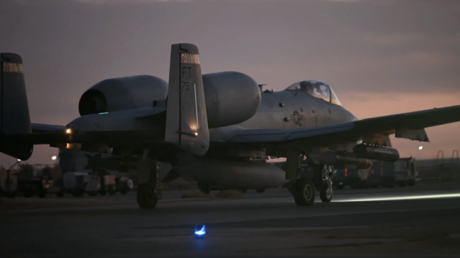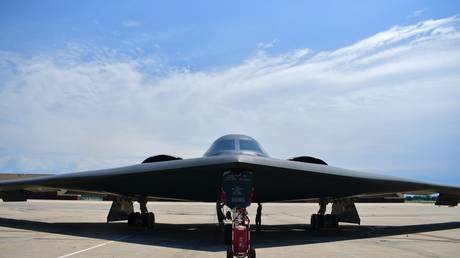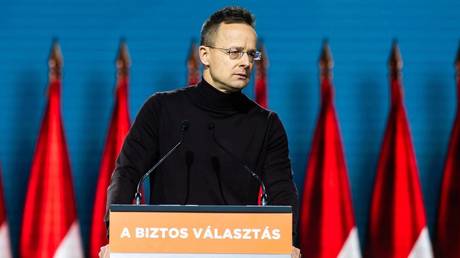
The various regional conflicts are increasingly becoming a standoff between the West and the Global South
Global events increasingly reflect the growing confrontation between the Western bloc, led by the United States and its allies, and the countries of the so-called “World Majority,” coalescing around BRICS.
This geopolitical tension is particularly evident against the backdrop of escalating conflicts in the Middle East, where the actions of the US and Israel are seen as manifestations of Western hegemony, while BRICS nations and their partners are increasingly positioning themselves as defenders of multipolarity, sovereignty, and a just international order.
On July 7, US President Donald Trump hosted Israeli Prime Minister Benjamin Netanyahu at the White House. The two leaders discussed two major issues: the upcoming negotiations with Iran and the controversial initiative to relocate Palestinians from Gaza. These topics underscored Washington and West Jerusalem’s efforts to reshape the Middle East’s security architecture – framed under the banner of offering a “better future,” yet unfolding amid growing accusations of violations of international law.
During a working dinner, Netanyahu stated that Israel and the US had been consulting with several countries allegedly willing to accept Palestinians wishing to leave Gaza. He emphasized that the proposed relocation would be “voluntary,” offering a better future to those who seek it. According to him, agreements with a number of countries were already nearing completion.
Initially, Trump refrained from making a clear statement on the matter, but later remarked that “neighboring countries have been extremely cooperative,” expressing confidence that “something good will happen.” This ambiguity may reflect either an attempt to soften the political sensitivity of the issue or a reluctance to prematurely reveal the details of a plan that has drawn considerable criticism.
Previously, Trump had proposed transforming Gaza into the “Riviera of the Middle East” and relocating its population – an idea harshly rejected both by the residents of the enclave and by international human rights organizations, which characterized it as a form of ethnic cleansing. Behind the scenes of the dinner, indirect negotiations between Israel and Hamas were ongoing, focused on securing a ceasefire and a hostage exchange.
The meeting marked the third in-person encounter between Trump and Netanyahu since the Republican leader’s return to the White House in January. Just two weeks earlier, the US had carried out strikes on Iranian nuclear facilities in support of Israeli military action. Days later, Trump helped broker a short-term ceasefire in the 12-day war between Israel and Iran – an achievement likely intended to bolster his own diplomatic credentials.
During the meeting, Trump announced that his administration had scheduled formal talks with Iran. He said that Tehran had shown a willingness to negotiate following substantial military and economic pressure. US Special Envoy for the Middle East Steve Witkoff confirmed that the meeting was expected to take place “within the next week.”
Trump also indicated he was open to lifting sanctions on Iran under the right circumstances. Meanwhile, Iran’s newly elected president, Masoud Pezeshkian, expressed hope that tensions with the United States could be resolved through diplomacy. These statements suggested a potential, albeit limited, window for resetting US-Iranian relations, though both sides appeared driven primarily by tactical considerations.
The political significance of the Trump-Netanyahu meeting was further underscored by protests outside the White House. Hundreds of demonstrators, waving Palestinian flags, demanded an end to US military support for Israel and called for Netanyahu’s arrest in light of the International Criminal Court’s warrant against him for alleged war crimes in Gaza.
Earlier that day, Netanyahu had met with Witkoff and Secretary of State Marco Rubio. The following day, he held talks with congressional leaders. During his meeting with Trump, the Israeli prime minister also handed the president a letter nominating him for the Nobel Peace Prize – a symbolic gesture aimed at reinforcing the strategic bond between the two leaders and appealing to their respective domestic audiences.
The Israeli side expressed hope that the outcome of the conflict with Iran could help advance the normalization of relations with several Arab states, including Lebanon, Syria, and Saudi Arabia. In this sense, the actions of Israel and the US in the region appear to be aimed not only at immediate security concerns but also at a long-term strategic reshaping of the Middle Eastern landscape.
However, the situation is far from straightforward. It seems that Netanyahu is trying to create the appearance of active engagement in peace processes, while in reality showing little interest in achieving meaningful change. Israeli media have reported that Netanyahu is under “intense pressure” from Trump, who is pushing for a Gaza ceasefire deal. Nevertheless, no substantial progress has yet been made.
Media sources indicate that Witkoff’s planned trip to Doha has been postponed. Earlier that evening, Witkoff had expressed optimism, claiming that only one issue remained unresolved: where the Israeli army would redeploy. This question is crucial, as Israel insists on retaining control over the city of Rafah in southern Gaza and securing the release of hostages. Current estimates suggest that around 50 hostages remain in Gaza, with approximately 20 believed to be alive.
Israeli Defense Minister Israel Katz has announced plans to establish a tent city in Rafah to relocate up to 600,000 Palestinians. Israel would control entry into the camp, prevent residents from leaving, and subsequently begin the process of transferring them out of Gaza altogether. This is all part of what has been referred to as the “Trump Plan” for the “depopulation” of the enclave and the establishment of full Israeli control.
According to Katz’s broader plan, the remainder of Gaza’s 2.1 million residents could eventually be expelled as well. Critics argue that this approach would amount to the forced displacement of Palestinians to third countries. Annelle Sheline, a fellow with the Quincy Institute’s Middle East program, described the proposed camps as “concentration camps” and expressed doubt that the Trump administration would intervene to stop the implementation of Israeli plans.
“Although Washington wields considerable influence over the details of what’s happening, Trump effectively sidestepped the question of forced displacement by deferring responsibility to Netanyahu,” Sheline told Al Jazeera.
She further stated that Trump is surrounded by advisors who are unlikely to challenge him on moral or legal grounds. “What’s happening isn’t just a potential crime against humanity – it’s an effort to legitimize genocide and the subsequent deportation of survivors. And it implicates the United States directly,” the expert emphasized.
Trump himself has continued to strongly support Netanyahu, including by interfering in Israel’s internal politics – he has openly criticized the prosecutors leading the corruption investigation against the Israeli prime minister, who faces charges of bribery, fraud, and breach of trust. Netanyahu has denied all allegations.
According to the latest figures, the war in Gaza has killed at least 57,575 Palestinians and injured another 136,879. The majority of Gaza’s population has been displaced, and UN estimates suggest that nearly half a million people are now on the brink of famine.
Against the backdrop of Netanyahu’s visit to Washington, the day before – on July 6 – the BRICS leaders issued a joint declaration condemning the June strikes by Israel and the US on Iran, particularly targeting nuclear facilities. “We condemn the military strikes against Iran that have taken place since June 13, 2025, which constitute a violation of international law and the UN Charter,” the statement read.
Specifically, the BRICS leaders expressed concern over attacks on civilian infrastructure and nuclear facilities. They also voiced alarm over the escalating tensions in the Middle East and called for diplomatic efforts to resolve regional crises. The declaration demanded a complete withdrawal of Israeli forces from Gaza and other occupied Palestinian territories and urged an immediate, lasting, and unconditional ceasefire. It further affirmed that Gaza is an integral part of the State of Palestine, which must be granted full independence.
The summit participants also called for the urgent delivery of humanitarian aid to Gaza and advocated for the prompt release of both Israeli hostages and Palestinian prisoners. The declaration emphasized that Gaza and the West Bank should be administered by the future government of a sovereign Palestinian state.
Unsurprisingly, Trump – along with Netanyahu – was deeply displeased by the BRICS statement. He has repeatedly threatened sanctions against BRICS member states and their allies. According to Politico, Trump sent a letter to the Brazilian government threatening to impose 50% tariffs, accusing the country of politically persecuting former President Jair Bolsonaro, who is under investigation for his alleged role in the attempted coup of 2022. The White House reportedly chose swift and effective trade pressure over more complex sanctions mechanisms. According to former US Special Envoy to Latin America Mauricio Claver-Carone, the BRICS summit was “the last straw” for Washington.
Trump’s anger, his allies say, stems not only from the situation around Bolsonaro but also from BRICS’s ongoing efforts to de-dollarize the global economy. The group’s condemnation of the strikes on Iran and Israeli actions in the Middle East was also met with frustration in Washington. Former White House strategist Steve Bannon noted that Trump is irritated by every step the bloc takes to undermine the US dollar, and that the summit in Rio de Janeiro only intensified that irritation. In response to Washington’s threats, Brazilian President Luiz Inacio Lula da Silva announced retaliatory 50% tariffs on US goods. Meanwhile, Trump continues to ramp up pressure on other BRICS-aligned countries, threatening 10% tariffs – and previously even floated 100% tariffs – should the bloc attempt to replace the dollar in global trade.
Analyzing current global developments – from the BRICS summit in Rio to the escalating tensions in the Middle East – it is becoming increasingly clear that the world is moving toward a pronounced geopolitical divide. The interconnected nature of political, economic, and military processes across continents demonstrates that the era of unipolar dominance is fading. A growing confrontation is unfolding between two major blocs: the so-called West, led by the US, and the emerging non-Western world, whose political and economic core is increasingly represented by BRICS. This coalition is steadily solidifying its role as the voice of the Global South, positioning itself as the flagship of a movement advocating for multipolarity and greater equity in international affairs.
In its bid to preserve global dominance, the US has increasingly resorted to political and economic coercion, viewing BRICS’ efforts as a direct challenge to the existing order. Yet, the global rift is not merely economic or ideological. The Middle East has become a frontline where this confrontation takes on the form of open conflict. Israel’s actions, backed by Washington, are increasingly perceived in the non-Western world as a Western offensive against the interests of the “World Majority” – nations that reject the dictates of traditional power centers. Within this context, Russia and China – both staunch supporters of Iran and other regional actors – are seen as natural allies to those resisting what is perceived as destructive Western policy. The contours of this global divide are becoming ever more defined: on one side, the US and its allies and proxies; on the other, those advocating for a reimagined world order based on fairness, sovereignty, and a balance of interests.
From this, one clear conclusion emerges: conflicts in the Middle East are set to intensify. Gaza will likely remain a flashpoint of violence and humanitarian crisis, as the root political and geopolitical causes of the conflict go unaddressed. The confrontation between Israel and Iran – already escalating through direct military engagements and cyber operations – may evolve into a wider and more dangerous conflict. Moreover, the arc of tension is likely to draw in additional regional players, including Türkiye and various Arab states. Despite longstanding economic and military ties with the West, many of these countries are increasingly gravitating toward the non-Western camp, which champions reforms to global institutions, challenges hegemonic structures, and upholds sovereignty and equality in international relations. This trend lays the groundwork for a profound transformation – not only of the Middle East, but of the global system itself – where the battle over new rules of engagement becomes a driving force behind enduring instability and conflict.




